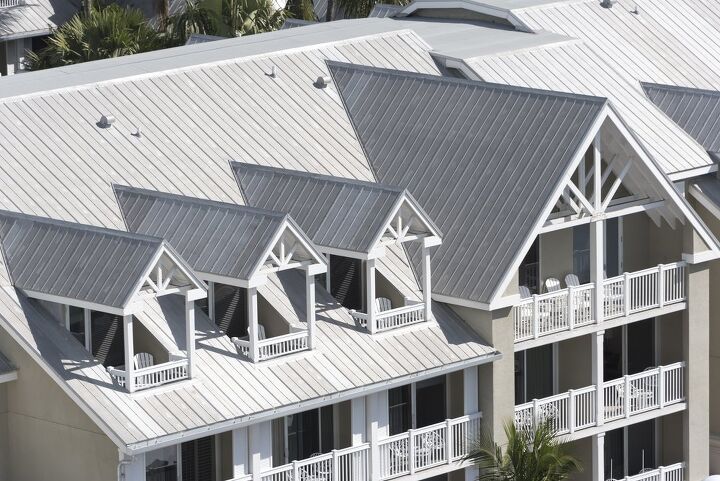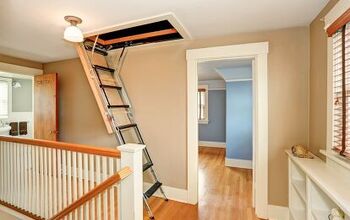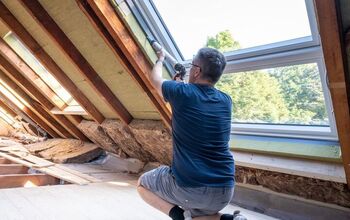Who Is Responsible For The Attic In A Condo? (Find Out Now!)

If you’ve ever walked through a condo, then you already know that many of them tend to have a petite attic at the top. It’s tempting to put stuff up there, and you can. It’s your attic, after all. But, what happens when a repair is in need? Who’s in charge of the attic?
The attic is often considered to be a part of the limited common element, which means that it is inside the portion of the building that is adjacent to your living space. This means that your HOA is responsible for repairs to the attic. However, if something hits your condo’s roof, the exterior could be the responsibility of the HOA depending on the home.
There are a lot of different ways that your condo’s parts can be labeled. In order to understand responsibilities, it’s important to understand what each term means and how it can impact you.
Before You Begin: Check Your Condo Handbook!
Your condo handbook will break apart the parts of your condo in three categories: common elements, unit elements, and limited-common elements. From there, you will be able to learn who’s responsible for all elements of each type in your home.
Understanding Each Element’s Definition
Now that you know where to get information on your unit and condo responsibilities, it’s time to define each element. Here’s what you need to know:
- Common Elements. Common elements are part of the condo building that everyone shares. This often includes the lawn, the main stairs, main meeting rooms, as well as any athletic extras. If there’s a lobby or a hallway, it’s a common element.
- Limited Common Elements. These are elements that are found outside your housing unit in common areas, such as right outside your condo’s exterior. This can include steps, porches, patios, window shutters, as well as awnings. Even AC units are limited common elements. Most HOAs consider this to be the arena where your attic lies.
- Unit. Everything that is inside the condo that you live in is (generally) going to be a unit item. This includes kitchens, basements, your living room walls, lighting fixtures inside your unit, as well as wallpaper. Some HOAs will also consider the attic to be a unit.
Note: Your condo documentation may have slightly different notes about what each element is. If you are even the least bit uncertain about where your attic (or part of your attic) lies in the scheme of things, ask your condo board. It’s never bad to ask!
Whose Responsibilities Are What?
Generally speaking, common elements are going to be the responsibility of the condo association. That’s part of the reason why you pay for your maintenance fees, right? Even limited common elements are often (but not always) covered by the condo association.
Unfortunately, whatever happens to your unit area is going to be all on you. This is why you should take a look at the different types of condo insurance and find the one with the most able to protect you.
What Should You Do If Your HOA Doesn’t Specify What The Attic Is Defined As?
If your homeowner’s association doesn’t have a specific definition for the attic, hit the pause button on a sale if possible. Otherwise, ask them to clarify it in writing and hire a lawyer to help you out if you need to have your condo company cover a repair.
How Can You Tell If Your Attic Is Part Of Your Condo Unit?
The easiest way to find out is to ask your condo board who maintains the attic. Of course, if you are currently in the middle of a real estate sale, it’s also easy to get information. In most cases, inspections won’t be done on parts of the condo that are being managed and maintained by the HOA. If the attic gets skipped, it might be a limited common element.
Who’s Responsible If Your Attic Was Harmed By Bad Roofing?
Here’s an interesting thing about the condo definitions and where responsibility lies: situations matter. In most states, the cause of the damage to your attic will matter just as much as the damage itself. Here’s what you need to know:
- If the damage to your attic was caused by a leaky roof, you probably don’t have to deal with the damage yourself. This is because a lack of attention to the roof caused the damage to your attic. Roofing is almost always considered to be a “common element.”
- On the other hand, if damage was done as a result of neglect to something in your unit, you’ll be on the hook. Let’s say that you decide to install something in your kid’s playroom—a jungle gym or something. The jungle gym ends up breaking a hole in the ceiling, causing your attic’s insulation to tumble through the floor. This is on you.
- Should the attic be in disrepair as a result of neglect, it’s best to look at the condo handbook to determine who’s in charge. Attic maintenance can be pretty easy to forget about. This is doubly true if you do not know if you’re responsible for attic repairs. It’s good to know before you find out the hard way.
Can You Store Items In Your Condo Attic?
Yes, you can! Attics are technically mixed-use in terms of condos. So, while they are there to help insulate your home, they also are meant to be pretty good storage areas. They’re kind of like basements in that sense. As long as there are no restrictions on attic storage in your condo agreement, you should be fine to store stuff.
With that said, attics are not always a “single unit” deal. You might share your attic with other people, and things can get sticky.
What Should You Do If Your Condo Association Won’t Pay For Attic Repairs?
This is a tough one, because you might not actually have legal ground to stand on. If you want to press the matter, here’s what you might be able to do:
- Start by documenting the damage. Document everything, including writeups from witnesses (if applicable) and photos. If there is something that shows that the damage was done from condo HOA neglect, bring it, too.
- Call a lawyer who specializes in real estate. Explain the situation, and leave no details out of it. The lawyer will be able to determine if you have a case or not. Ask the lawyer if you have a case for your insurer, too.
- If you do not have a case, call your homeowner’s insurance company to see if there’s anything that can be done. Otherwise, you will have to pay out of pocket for the repairs. It’s worth a shot. If you choose this, follow your lawyer’s advice.
- If you do have a case, compile evidence and get an estimate as to how much your attic will cost to fix. This is often going to be something that your real estate lawyer will be able to help you with.
- File a suit and go to court. It’s worth noting that most condo associations will not actually want to go to court to fight this. This is doubly true if they know they’re trying to skirt an obligation they are required to do.
Note: It’s important to realize that it may be more expensive to go to court than it would be to just get the work done yourself. If you want to move things to court, make sure that you have a case and that the case would make sense to bring to justice. Sometimes, it’s easier to “eat the fee.”
Related Questions
How common are lawsuits against condo associations?
It’s never a good sign if you see lawsuits regularly popping up against condo groups, especially if it deals with neglect. If you want to avoid a seriously bad buy, you won’t buy a condo in a company that’s known for suits. With that said, once in every couple of years, you might still see a lawsuit. People can be litigious like that, and it could be a cash grab.
Who is responsible for damaged or stolen items in a condo attic?
Assuming that the items were damaged by a hole in the roof, there is a chance that your condo association could be liable for the damaged items. However, most of the time, condos will not be able to be held liable for damaged or stolen items that were placed in an attic. This is doubly true if your attic is shared with other condo owners.
Can you turn an attic into an apartment if you live in a condo?
While you should always check with condo association members about this, the truth is that this is something that’s almost universally panned by condo HOAs. Condo HOAs generally want to keep the integrity of the home they provide you intact. When you start adding amenities outside of the unit that you own, you’re basically violating one of the most basic parts of the contract.

Ossiana Tepfenhart is an expert writer, focusing on interior design and general home tips. Writing is her life, and it's what she does best. Her interests include art and real estate investments.
More by Ossiana Tepfenhart



























